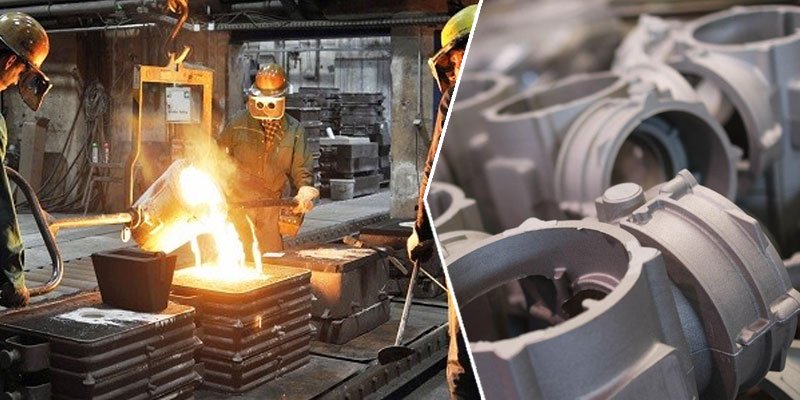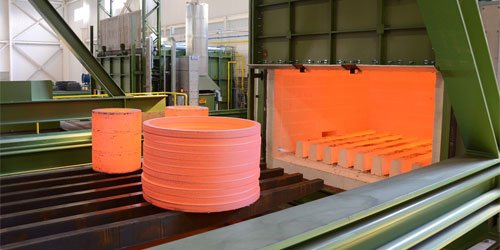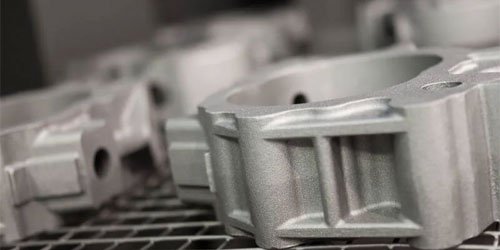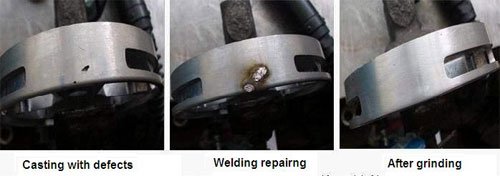
In casting production, achieving superior performance in the final product relies not only on the casting process itself but also on the crucial post-processing steps that follow. These processes work together to enhance the quality and durability of castings, ensuring they meet the demanding standards of various industries.
1. Overview
What is casting?
Casting is a common metalworking process that involves heating metal to a liquid state and pouring it into a mold, allowing it to solidify into a specific shape upon cooling.

Casting technology is widely used in a variety of industries, such as automotive, aerospace, and energy, and is capable of producing metal parts of complex shapes and large sizes.
What is post-processing?
Post-processing is a series of additional processing steps performed on a component or product after the primary manufacturing process has been completed. The purpose is to improve the appearance, dimensions, performance or functionality of a product to ensure that it meets design requirements and is ready for end use.
2. Why post-treat castings?
During the casting process, a number of physical and chemical defects, such as porosity, cracks, surface roughness, etc., may occur as the metal liquid cools. Although the castings can meet the basic requirements in shape, they may be deficient in mechanical properties, surface quality and durability. Post-treatment is precisely designed to solve these problems and optimize the performance of the castings to ensure that they can meet the stringent requirements of end-use.

Post-treatment not only improves the hardness, strength and toughness of the castings, but also improves the surface finish, corrosion resistance and wear resistance. Therefore, post-treatment is an indispensable step to ensure the quality of castings.
3. Specifics and purpose of post-processing
Post-treatment includes a series of physical, chemical and mechanical processes designed to improve the mechanical properties, appearance and durability of castings.
Each post-treatment method has its specific purpose:
- Heat treatment: To change the internal organization of the casting and enhance its hardness and toughness by controlling the heating and cooling process.
- Surface treatment: to improve the quality of the casting surface, increase corrosion resistance and aesthetics.
- Defect removal: Eliminate defects in the casting due to uneven casting, improper cooling rate, etc., and enhance the structural strength.
Through these methods, the castings can meet the expected technical requirements and standards.
4. The effect of post-processing on casting performance
Post-treatment is vital for improving casting performance. Heat treatment enhances hardness, wear resistance, and strength, especially in harsh environments. Surface treatment increases corrosion resistance and reduces wear. Removing defects like porosity and cracks improves stability and prevents breakage.
In high-precision industries such as aerospace, automotive, and medical devices, post-processing ensures reliability and long-term performance.
5. Common Post-processing methods
Heat treatment

Heat treatment is the most important part of the post-treatment process, usually including annealing, quenching and tempering processes. By precisely controlling the heating temperature and cooling rate, heat treatment can effectively change the organization of castings.
For example, quenching can improve the hardness of castings, while tempering can eliminate internal stresses and improve the toughness of castings.
Surface treatment

The main purpose of surface treatment is to improve the surface quality of castings and increase their corrosion and wear resistance. Common surface treatment methods include sandblasting, polishing, plating and coating.
These methods can make the casting surface smoother and enhance its durability in harsh environments.
Defect removal

Defect removal is a key step in post-treatment, as castings are often unevenly cooled during the cooling process, resulting in defects such as porosity and cracks.
Through cutting, grinding, welding and other processes, these defects can be effectively eliminated to ensure the structural integrity of the casting.
Cooling and curing control
Controlling the cooling rate and curing process of the casting is very important for the uniformity of its internal organization.
Reasonable cooling and curing control can avoid warping or deformation of the castings and ensure that they have better mechanical properties and stability.
6. Synergies between casting and post-processing
Complementary relationship between casting and post-processing
Casting and post-processing play complementary roles in the production of castings. Casting provides the initial shape and dimensions of the metal part, while post-processing compensates for defects that may arise during the casting process.
While casting technology can produce castings efficiently, the post-treatment process ensures that the castings meet the required performance and quality standards. The combination of the two allows the casting to be maximized.
Enhancing the quality of the final product
The quality of the final product is greatly enhanced through the combination of casting and post-processing. Post-processing improves hardness, strength, and surface finish, ensuring optimal performance and long-lasting durability. This is especially critical in industries like aerospace, automotive, and energy, where casting quality is paramount.
Conclusion
Casting and post-processing go hand in hand in the production process. While casting efficiently shapes metal parts, post-processing is essential for boosting performance, eliminating defects, and improving surface quality. By carefully selecting the right post-treatment methods, castings can achieve enhanced durability and meet higher technical standards. In industries with rigorous quality demands, post-processing is a critical factor in ensuring the final product’s success.